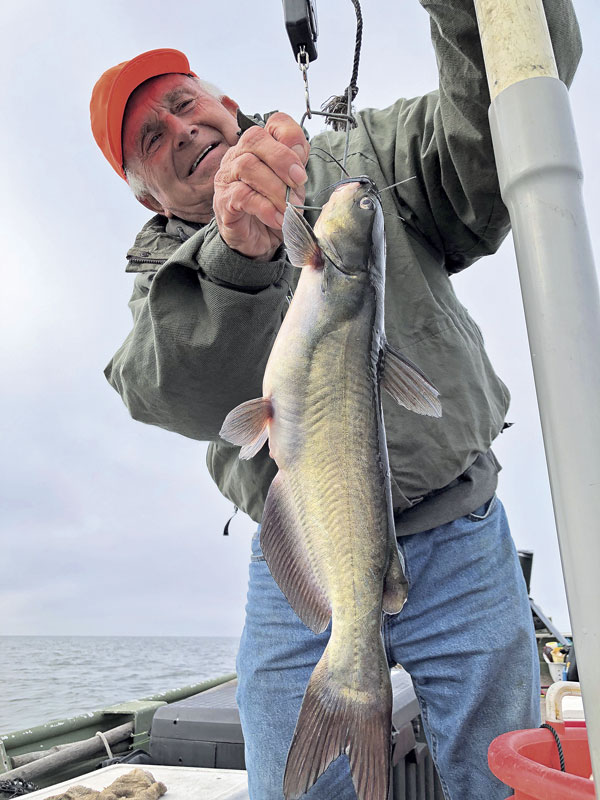
Having been born and raised in south Louisiana and being a sportsman here in bayou country there’s one thing I know about the fishermen of this state: They do not acclimate to change very well. And perhaps no body of water has changed for fishermen in recent years as much as Lake Pontchartrain.
After hurricane Katrina blew through in 2005, the Army Corps of Engineers began construction on a rock dam across the Mississippi River Gulf Outlet to protect Chalmette from another storm surge. After completion it soon became clear that blockage reduced the circulation of salt water to Lake Borgne which feeds into Lake Pontchartrain.
In addition to that, the 630 square-mile lake has seen an increase in fresh water via numerous openings of the Bonnet Carre’ Spillway, which diverts river water into the lake when the Mississippi River levels reach flood stage. The transition from salt to fresh is not only changing how anglers fish the area but it is also changing what species inhabit it. So, among other things, Mother Nature is bringing on the blues. Blue catfish, that is. Whether for better or worse, those that fish the lake are learning to just hang on and enjoy the ride.
Carl Schmidt of Abita Springs is doing just that, both figuratively and literally. Schmidt runs jug lines along the northern shoreline of Pontchartrain. He’s been fishing the lake since the 50s and said he’s never seen as many blue catfish in the lake as he’s seeing now. In addition to the numbers, the sizes are also increasing. On Schmidt’s latest trip to the lake he caught a personal best 45-pound blue cat.

The way it was
Schmidt was born in New Orleans in 1943 and was an avid saltwater fisherman by age 12. He can recall days of catching speckled trout in Pontchartrain along the rocks near the Seabrook Bridge.
“The trout were so thick along the rocks that you could catch them from the bank,” he said.
Schmidt recalls numerous times when he would stop and catch a dozen speckled trout and ride home with a stringer of fish draped across his handlebars.
In addition to trout he would catch large sheepshead in the lake. By age 30 he belonged to a select group of anglers that called themselves the City Limits Tarpon Club.
“The only way you could get into that organization was to catch a tarpon within the city limits of New Orleans,” the 78-year-old said. Schmidt became a member by catching a 156-pound tarpon and five years later he caught one that weighed 188 pounds, which ranked No. 2 in the state.
Some 40 years later Schmidt is still catching big fish, but a lot has changed.
Schmidt moved to Abita Springs in 2012. It’s then that he started running jug lines for catfish in the rivers and certain areas of the lake on the Northshore. With every year that goes by, Schmidt said he is seeing more and more catfish being caught.

There’s a system
On his latest trip, Schmidt was running jug lines in the Lake near Bayou Lacombe. He baited 30 lines and systematically tossed them out near the shoreline.
“I like to pattern the floats so that if one in missing from the line of floats, I know to look for it nearby,” he said. “It’s usually not far and very obvious because the float is moving across the surface causing a ruckus.”
After tossing his last line overboard he made his way into Bayou Lacombe in an attempt to try and catch a few bass to pass the time. After a few hours of fishing he decided to make a run and check his jug lines. He passed a few floats and noticed one missing, immediately turning to scan the water surface for the missing float.
“It’s exciting to see one missing because you know it’s missing for a reason,” Schmidt laughed. He soon spotted the float away from the shoreline about 50 feet away. He excitedly gunned the motor and steered his 16-foot flatboat toward the float that was cutting through the water.
“That’s when I knew it was a big fish,” he said. “That thing was moving!”
Schmidt was able to track it down after a 5-minute chase and grab the float. Schmidt ties a loop knot near the float which allows him to connect a separate line that he keeps in his boat. The spare line is approximately 20 feet long and contains a latch which he uses to connect the lines together in order to give him more slack to fight a big fish. Schmidt connected the latch to the float line and the battle began.
“That thing liked to pull me over the side,” he said.
After a 15-minute fight he managed to tire the fish out and was able to net him. Schmidt quickly assembled his slide-in pole that he uses to weigh fish on his boat and after lifting the fish onto the hook the scale read 45 pounds. This was the biggest blue catfish he caught in the lake to date.
“I’m 78 years old and fighting big fish has yet to get old for me,” he said.

The Schmidt setup
Schmidt’s lines consist of one main line that ends with a one pound bank sinker. He ties a separate line that measures two feet onto the main line. That line ends with a 5/0 hook. The short line serves as a tension free line so that the fish is able to eat the bait without feeling the float or weight on the bottom. For floats, Schmidt uses swimming noodles. He said he sees those noodles in the trash all the time so he just stops and throws them in his truck. He feeds the main line into the bottom of a two-foot-long noodle. This allows the float to stand up in the water when a fish is hooked.
While most people don’t consider catfish picky eaters, Schmidt has a preference as to what he uses as bait for blue cats. He buys a pack of chicken livers and mixes in a cup of sugar into the package. Then he lets the livers soak over night. The sugar makes the livers more firm, and the livers stay on the hook better after soaking in sugar.

Table fare extraordinaire
There are various opinions on which type of catfish taste the best. And everyone agrees that the muddy taste that is experienced on occasion can ruin a fish fry. Anglers who fish the lake for blue cats are in agreement that these fish very rarely taste muddy due to the clean water and partially sandy bottom of Lake Pontchartrain.
While Schmidt enjoys catching big blue cats it’s actually the smaller ones that he prefers to keep because of the quality of meat.
“The perfect sized catfish are from 14-18 inches,” he said. “I find that meat on the larger ones can tend to be mushy.”
Schmidt fillets them and then cuts them into chunks about three inches long. When they are ready to go into the oil he skips the egg wash and goes a different route.
“I like to pat the fillets dry before tossing them into the batter,” he said.
When battering the fish, he uses a half mixture of Zatarain’s Fish Fry and corn starch.
Winter is prime time
Anglers will be able to catch blue cats in the lake with ease this month. But Schmidt warns to stock up your freezer now because the majority of the catfish move back into the rivers when the temperature begins to warm up. Reports show that the catfish are plentiful in the lake from October to March, but this is prime time.
“Those catfish are forced to move out of the rivers during the winter months because of scarcity of food,” he said. “Lake Pontchartrain is full of clams that serve as food for them until the shad return to the rivers. The clams that the catfish feed on are called Rangia Clams. Every winter the blue cats scavenge for them along the bottom of the lake. After swallowing the clams, their digestive juices in their stomachs dissolve the membrane holding the shell closed at the same time dissolving the meat. They then pass the shell.”
Schmidt is one of a growing number of anglers who have turned their attention to catching catfish in the lake. The humble fisherman said that he’s by no means a pro and he’s learning from others how they catch blue cats.
“I feel I’m just scratching the surface,” he said. “There are guys out there catching three times as many fish.”
While Schmidt misses the old days of catching tarpon in Lake Pontchartrain he welcomes the change and is appreciative to still be able to catch fish on the lake that has brought him so many memories.
“Whether it be tarpon or catfish — I’m just thankful that I’m able to get out here put fish in the boat,” he said.


